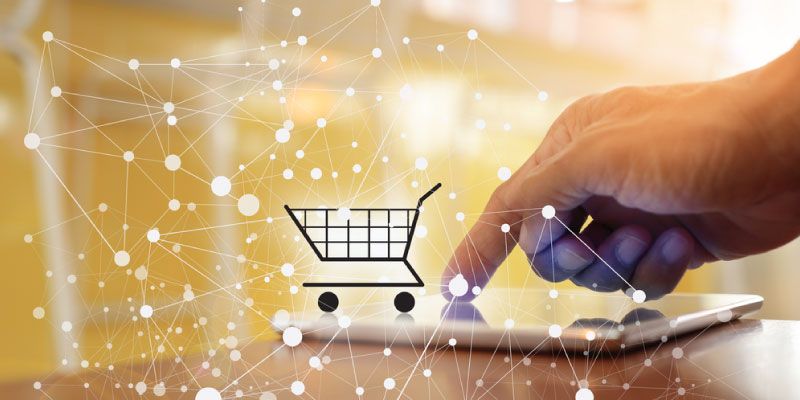
Cisco
View Brand PublisherWhy it’s time for Indian retailers to think digital
According to a report by IMD and Cisco on how digital disruption is redefining industries, the retail sector figures in the top 3. In the past decade or so, it has already seen overwhelming change with the rising popularity of online shopping. It is set to experience an even bigger shift in the coming years as businesses compete among themselves to ensure superlative customer experiences to grow their top line and super-efficient back-end infrastructure to protect their margins.
While predictions about the size of the Indian ecommerce market in 2020 have varied between $33 billion and $38 billion, NASSCOM believes that online shopping, or e-tailing will dominate the segment, edging out travel. According to Bengaluru-based market research firm Redseer Consulting, online retail is set gain 19 million shoppers in 2018, mostly from Tier 2 and beyond (Tier 1 cities will account for just 4 million shoppers). With internet penetration on the rise, a Google-BCG report believes online spending will grow to $100 billion by 2020.
Amid the many predictions, one thing is certain. Indians are spending more online than ever before and this number will only increase. IBEF estimates that India’s retail market will grow to $1.1 trillion by 2020. The competition is not offline vs online vs omnichannel, it is very much about competing for customers – customers whose personal preferences dominate where they spend and how much.

This is not to say that every offline store needs an online presence. Rather, it is about knowing your customer better and connecting with them in the way they want. And given the inherent nature of retail, give them an experience that brings them back for more. For traditional retailers, it has never been important or challenging to have their customers connect with them at every single touch point. And digitisation will help them accomplish this. In fact, the role of the digital network has never been more crucial than it is today.
Digital retail is more about an online presence
Retailers today need to think beyond implementing an ERP platform within the business and maintaining an online presence to interact with a larger base of potential customers. What they need is to formulate a strategy that allows them to use the strength of the network to connect with today’s consumers to be able to:
- Reach today's mobile, connected consumer
- Maintain consistency across channels and customer touch points
- Collaborate more effectively with employees and field managers
- Maintain security vigilance
- Reduce operating costs through a lean retail architecture approach
Customer experience – key aspect of modern retail
Shoppers today demand not just products but experiences at offline and online stores. Even with something as simple as scan-pay-go (self-check-out), the backend needs to be robust enough to manage the entire process and update the inventory in real time. If a customer finds that a shirt he’s liked is not available in his size, can a store clerk not offer to check whether it’s in stock at another branch or warehouse and have it delivered to their home the next day? These experiences need to be smooth, seamless and without restrictions, be it product information and availability, discounts and offers, personalised insights, or payment and delivery options.
Pop-up stores (temporary stores) that allow shoppers to experience products are a new way in which retailers create a brand experience with potential customers at a low cost. These are now increasingly frequently seen at malls and airports; in a way they are the modern equivalent of a stall at a temporary expo. And by promising quick doorstep delivery, brands are exploring the option of keeping limited inventories in-store.
Full visibility of inventories across locations and a robust logistics network allows retailers to offer customers the option of buying online but picking up the product at the store or buying online and returning at the store. The reverse applies too – buy at the store but have it delivered at home or return it from home too. This results in a true omnichannel experience.
Digitally remodelled stores that curate personal experiences are the need of the hour because they can cater to individual preferences like never before. With in-store Wi-Fi, businesses can navigate customers to where their preferred products are located.
In a connected retail world, a satisfied customer becomes a brand evangelist. Millennials broadcast their experiences – good and bad – using a variety of media, giving word-of-mouth publicity a multiplier effect. These brand advocates, in turn, help increase sales, reduce costs and create competitive differentiation.
When you give these customers the ability to connect and interact with your brand instantly and efficiently every single time, you create a consistent experience. This can be done through a shop floor assistant, customer care phone line, social media channels or just a customer assistance kiosk at the store itself. Using digital infrastructure that has been customised for your business, you could even deliver a mobile concierge service directly to a customer’s mobile phone, telling them about custom offers, new merchandise or product comparisons.
Digitally empower employees to deliver the goods
A digital business can empower its employees with knowledge, skills, tools and access to information. This makes them highly productive, trusted advisors no matter on which channel they are dealing with a customer – in person, on the phone, on chat or via social media. Tools like interactive displays, digital media, intelligent call routing, as well as unified mobility and communications solutions help employees deliver a better customer experience.
Internally too, unified mobility and communications solutions can help managers monitor store operations, streamline daily task management, measure productivity, etc. You can also deliver training and communication materials over the same network without having to spend to build additional channels.
Don’t forget about security – offline and online
Through it all, it is important to ensure that all your assets, physical and virtual, stay safe. It is important to have a holistic approach to online and physical security. In addition, you must ensure that best practices are put into place and employees trained to be just security-conscious. Securing customer data, for instance, is critical to retail success. A breach here would cause irreparable damage to a brand. Motion detectors that automatically trigger an alert on sensing movement during non-business hours is another way in which digital platforms help secure assets.
The right network architecture solution will incorporate the needs of your stores as well as your applications, including specific solutions for anti-virus, point-of-sale, scan, audit, remediation services, as well as best practices.
Going digital helps you grow
A digital strategy that transforms your customer experience, improves employee productivity and supply chain management and keeps your business safe doesn’t just provide cost savings and better margins. It also provides you with real-time insights on how your business is doing. At the same time, it frees up valuable time for you and your senior leadership team to use these insights and work on strategic initiatives to drive growth and innovation. That way, you’ll focus on work that enhances the value of your business, not on just keeping the engine running.
Given the scale and nature of disruption that surrounds us, it is important to act now for the following reasons:
- We live in an increasingly digital world, that’s where our customers are. According to The Economist (2016), “Every second, three more Indians experience the internet for the first time. By 2030, more than 1 billion of them will be online.” IAMAI predicts that India is likely to have 500 million internet users this month; 186 million of these will be in rural areas. A 2017 Google-BCG report predicts that digital spending in India is set to reach $100 billion by 2020, tripling from $33 billion in 2016-17. That’s a huge market to tap.
- Digital opens up a huge avenue for local businesses: the global market. The mobile ecosystem could reach $4.6 trillion, or 5 percent of GDP, by 2022. Whether your customer is in the next neighbourhood, or half-way around the world, your digital presence can connect you to any of these at no additional cost.
- In a digital world, your competitor is just as close to your customer as you are. When customers have more options, competition is fierce. In such a scenario, your operations, productivity and efficiency – your overall business fitness -- need to be nothing short of top-notch.
- Managing IT infrastructure isn’t complicated any more and service providers also provide training for your workforce.
I would point to another important digital business impact: the market value of the business too can increase along with the business volumes and profit margins. For example, US-based grocery chain Blue Apron went public and is trading at a revenue multiple of about 1x, whereas online marketplace CarGurus, which went public, is valued at a revenue multiple of more than 10x thanks to its greater use of digital process transformation (source: Inc magazine).











